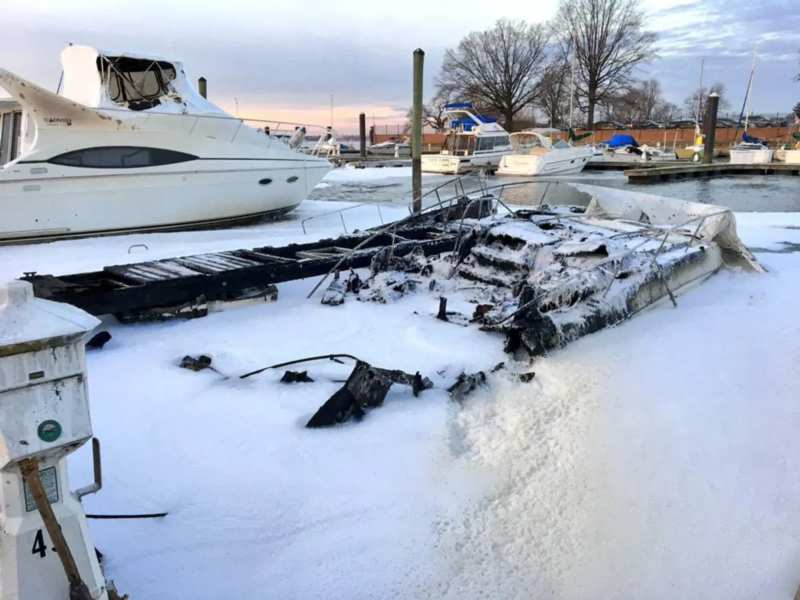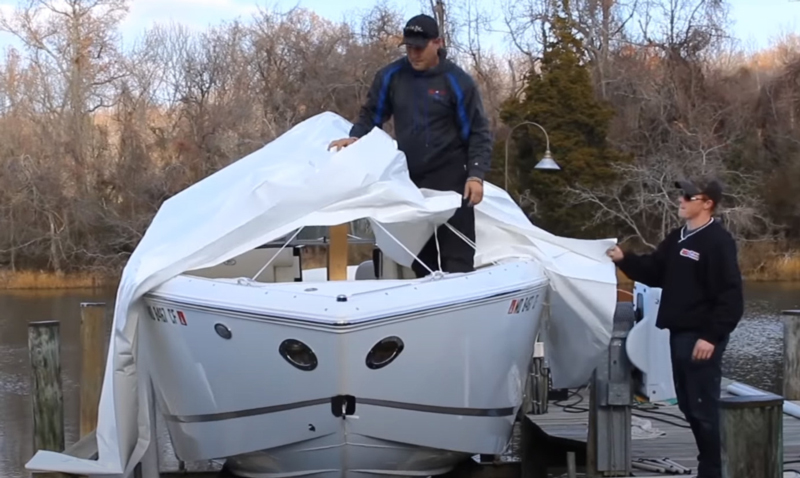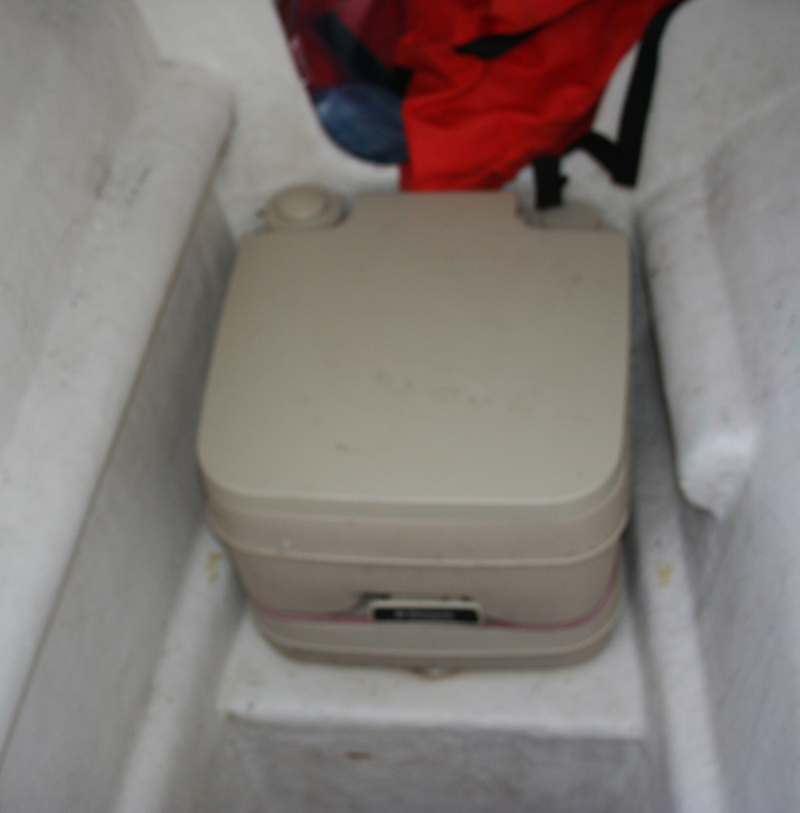You say it’s time to winterize your boat? We say balderdash!! There’s a solid month of excellent Chesapeake Bay fishing yet to take place. Our strong recommendation is to invest in a good warm float-coat, long johns, and fingerless gloves. Keep on fishing, and set this advice aside for at least four more weeks before you hang up your rods for the season. Then come back to this page and when you do lay up Mom’s Mink for the winter, you’ll remember to avoid:

- (Not So) Bright Idea – You know that old trick you heard about where you leave a light bulb burning in the bilge to keep it warm belowdecks, so that you don’t have to winterize the boat? Don’t do it. This seemingly safe practice has led to plenty of boat fires, so many that some insurance carriers specifically won’t cover the damage if you leave that bulb burning. Worse yet is leaving a space heater aboard, which insurance claims reports show is the number-one reason why boats end up aflame during the winter months. If you need to heat the bilge or engine room, the only safe way to do so it with a purpose-built bilge heater made with ignition protection and built to ABYC standards.
- Fuelish Behavior – Hopefully you already know to top off the fuel tanks before winter sets in, to minimize condensation buildup. But don’t stop there — you also need to add a quality fuel stabilizer and run the engines long enough before winterizing them that the additive works its way through the entire system. There are lots of additives out there and we’re not going to claim to know each and every one and how well they work or if they don’t (some definitely don’t), but we do know from experience that Techron Marine and Star Tron have delivered excellent results for us during winter storage of marine fuel systems through the years. We’re also confident that if water does get into the fuel tank, which can always be a problem when ethanol is at issue, FormulaX2 is the additive you need to get rid of it. It breaks water molecules into hydrogen and oxygen, the hydrogen bonds with the fuel molecules, and the oxygen is released into the atmosphere; FormulaX2 even guarantees it’ll get rid of that problematic H2O and prevent future phase separation.
- Lower Unit Losers – Two actions can kill a lower unit over the winter: leaving it tilted up, or covering it in plastic. Both can result in freeze damage. Lower units are designed to drain completely when tilted all the way down (running antifreeze through them is 100 percent unnecessary, as it will all just drain right back out) but if you leave one tilted even partially up, it’ll hold water. Wrapping the lower unit in plastic is just as bad because condensation can form under there, pool up, and then freeze. More than one lower unit has been busted wide open by freeze damage, so either leave yours uncovered or protect it with a cover that can breathe and make sure the engine’s tilted all the way down.
- Tarp Trauma – Those cheap blue tarps might seem like an economical way to protect your boat during the off-season, but they can do more harm than good. The checkerboard-pattern threading in them is abrasive, and if it rubs back and forth in the wind it can wear away the finish on an outboard cowl or the shiny gel coat you painstakingly waxed last spring. If you go for the tarp option, be 100 percent sure it’s completely secured and can’t saw back and forth in the wind. And wherever items with a shiny finish come into contact with the tarp, protect them with old towels or sheets.

- Shrinky-Dink – You could spend the money to get your boat shrink wrapped, or you could spend a bit more to get a shrink wrap kit and then do it yourself year after year… right? Wrong. Shrink wrapping is a bit of an art. Seemingly innocuous details like when and where to wave the heat-gun, where and how many vents to place, and how to place support straps so they don’t damage your boat, all take experience to get right. Most first-timers will ruin enough shrink wrap material during the learning curve that those cost savings melt right away. Others will think they’ve done a good job, only to find that the first snowfall creates rips and holes where they overheated (thus weakening) the material. Oh, and about those heat guns? More than one DIY boater has started a boat-B-Q by accident, after pointing it in the wrong direction.
Naturally, there are plenty of other winterizing problems to beware of. We’ve heard about boats that fell victim to wire-chewing mice (PredatorPee, made with real bobcat urine, is a natural product that works well — or, you could get a cat). We’ve seen countless washdown and livewell pumps which fell victim to freeze damage due to improper (or no) draining procedures. And of course, the collapsing cover syndrome is one problem countless fishboat owners have had to deal with (call the shrink wrap guys; in the long run it’s cheaper). But the five issues listed here are genuine winterizing disasters. Make sure you don’t fall victim to any of them when you hang up your rods for the season — next month.
BONUS BOAT WINTERIZING DISASTER
You think boat damage is bad? Just imagine what happens if you forget about the half-full portable MSD in your center console head compartment and leave it sitting in there all winter long. When the contents freeze and crack the plastic, you probably won’t even realize there’s a problem. However, when those contents thaw and ooze out, the next time you walk past your boat one sniff will make clear what disaster has befallen your prized possession. Though the damage to your boat itself may be minimal, the cleanup chore will be epic.
